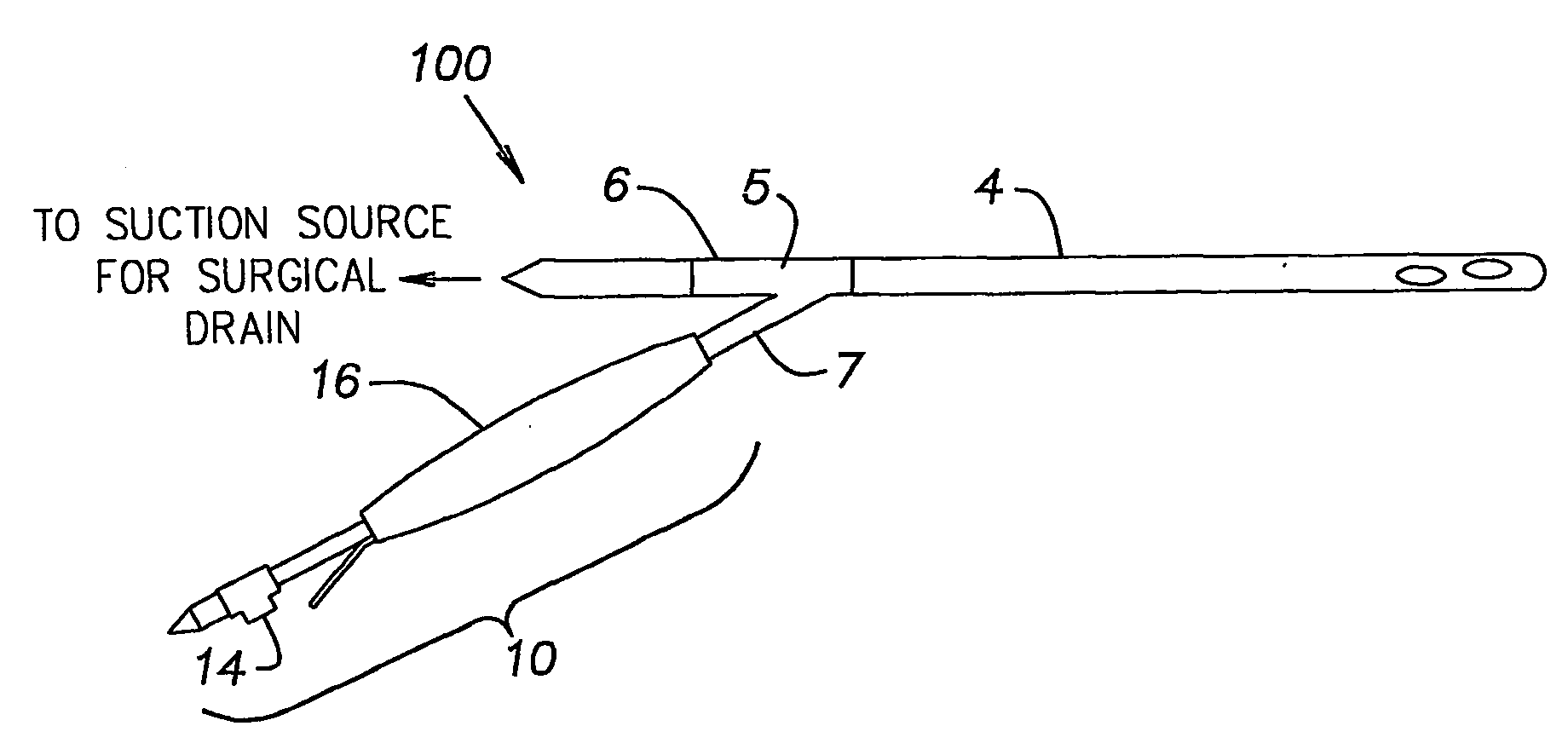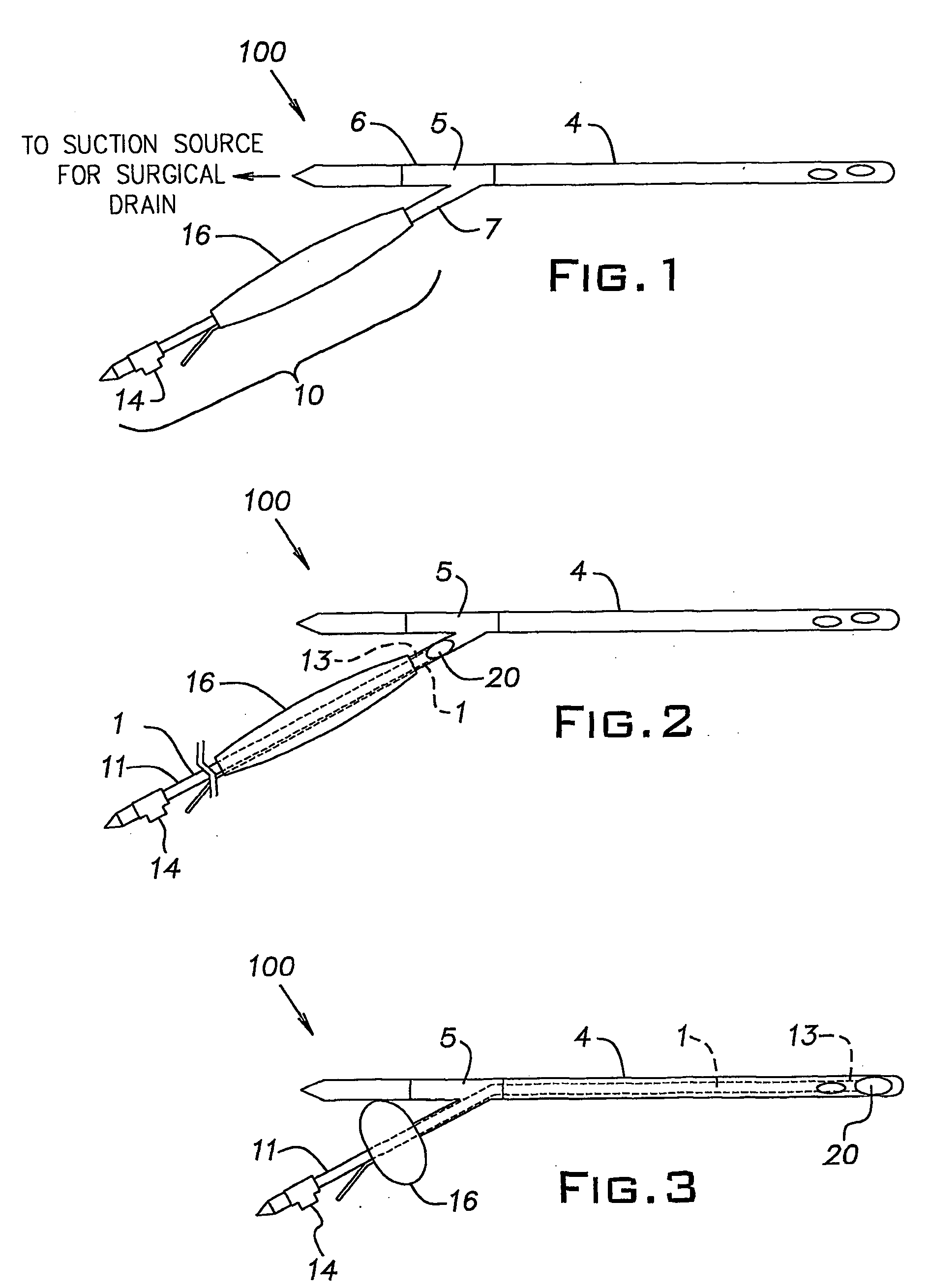Catheter for removal of solids from surgical drains
a surgical drain and catheter technology, applied in the field of catheters, can solve problems such as clotting of chest drains, drains that cease to function, and tendency to become occluded
- Summary
- Abstract
- Description
- Claims
- Application Information
AI Technical Summary
Problems solved by technology
Method used
Image
Examples
Embodiment Construction
[0022] In the description that follows, when a range such as 5 to 25 (or 5-25) is given, this means preferably at least 5 and, separately and independently, preferably not more than 25.
[0023] As used herein, the terms proximal and distal are generally construed with reference to a patient that has been fitted with a surgical drain. For example, the distal end of a surgical drain (or distal region of a catheter) is that end (or region) which is nearer or adjacent to the patient. Conversely, the proximal end of a surgical drain (or proximal region of a catheter) is that end (or region) which is further from the patient. Likewise, a distal element (or the distal side of an element) is nearer to the patient than a proximal element (or the proximal side of an element).
[0024] FIG. 1 shows a catheterized surgical drain assembly 100 according to the invention. The assembly 100 has a surgical drain 4 (such as a chest tube, biliary catheter, empyema tube, or other surgical drain), and a cathe...
PUM
 Login to View More
Login to View More Abstract
Description
Claims
Application Information
 Login to View More
Login to View More - R&D
- Intellectual Property
- Life Sciences
- Materials
- Tech Scout
- Unparalleled Data Quality
- Higher Quality Content
- 60% Fewer Hallucinations
Browse by: Latest US Patents, China's latest patents, Technical Efficacy Thesaurus, Application Domain, Technology Topic, Popular Technical Reports.
© 2025 PatSnap. All rights reserved.Legal|Privacy policy|Modern Slavery Act Transparency Statement|Sitemap|About US| Contact US: help@patsnap.com



